DEFEROXAMINE MESYLATE
Synonym(s):Deferoxamine mesylate salt;DFOM;Deferoxamine methanesulfonate salt;Desferrioxamine mesylate salt;Desferrioxamine Mesylate, DFOM, Iron Chelator II
- CAS NO.:138-14-7
- Empirical Formula: C26H52N6O11S
- Molecular Weight: 656.79
- MDL number: MFCD00058605
- EINECS: 205-314-3
- SAFETY DATA SHEET (SDS)
- Update Date: 2024-04-24 17:21:45

What is DEFEROXAMINE MESYLATE?
Description
Deferoxamine is a bacterial siderophore that chelates iron. It is used to experimentally inhibit iron-
Chemical properties
DEFEROXAMINE MESYLATE is white or almost white powder.
The Uses of DEFEROXAMINE MESYLATE
DEFEROXAMINE MESYLATE is an iron chelating agent used in therapy for patients with sickle cell diseases and iron overload. Studies suggest that it can exert potential antioxidant neuroprotective effects in stroke patients
The Uses of DEFEROXAMINE MESYLATE
chelating agent (Fe & Al)
What are the applications of Application
Deferoxamine mesylate is a bacterial siderophore, an iron chelator which induces apoptosis and is used to experimentally inhibit iron-dependent prolyl hydoxylases.
brand name
Desferal (Novartis).
Biochem/physiol Actions
An iron chelator used often in the studies of cell proliferation and apoptosis. Has been shown to have anti-proliferative effects on vascular smooth muscle cells in vitro and in vivo and to arrest cells in the G1 phase. Also reported to induce p53. Induces apoptosis in HL-60 cells by chelating iron. After 48 hrs treatment with 1μM deferoxamine, DNA fragmentation was apparent. Cells treated with 0.1 μM deferoxamine for as little as 24 hours were committed to apoptosis; by 48 hrs nuclear collapse was observed. In some studies it has been shown to have antioxidant properties and to protect cells against H2O2-induced damage.
Clinical Use
Chelating agent:
Acute iron poisoning
Chronic iron or aluminium overload
Veterinary Drugs and Treatments
Deferoxamine is used for the treatment of either acute or chronic iron toxicity. It is being evaluated as an iron chelator for adjunctive treatment of acute cardiac ischemia and as a chelator for aluminum toxicity. Its efficacy in treating reperfusion injuries has been disappointing.
Drug interactions
Potentially hazardous interactions with other drugs
Avoid prochlorperazine, levomepromazine and
methotrimeprazine (prolonged unconsciousness).
Do not administer with blood.
Metabolism
When given parenterally desferrioxamine forms chelates with iron and aluminium ions to form ferrioxamine and aluminoxamine, respectively. The chelates are excreted in the urine and faeces via the bile. Desferrioxamine is metabolised, mainly in the plasma. Four metabolites of desferrioxamine were isolated from urine of patients with iron overload. The following biotransformation reactions were found to occur with desferrioxamine: transamination and oxidation yielding an acid metabolite, beta-oxidation also yielding an acid metabolite, decarboxylation and N-hydroxylation yielding neutral metabolites.
storage
Store at -20°C
Properties of DEFEROXAMINE MESYLATE
| Melting point: | 148-149° |
| storage temp. | 2-8°C |
| solubility | H2O: 50 mg/mL |
| form | powder |
| color | white to off-white |
| Water Solubility | Soluble to 100 mM in water |
Safety information for DEFEROXAMINE MESYLATE
| Signal word | Warning |
| Pictogram(s) |
 Exclamation Mark Irritant GHS07 |
| GHS Hazard Statements |
H315:Skin corrosion/irritation H319:Serious eye damage/eye irritation |
| Precautionary Statement Codes |
P280:Wear protective gloves/protective clothing/eye protection/face protection. P302+P352:IF ON SKIN: wash with plenty of soap and water. P305+P351+P338:IF IN EYES: Rinse cautiously with water for several minutes. Remove contact lenses, if present and easy to do. Continuerinsing. P332+P313:IF SKIN irritation occurs: Get medical advice/attention. P337+P313:IF eye irritation persists: Get medical advice/attention. |
Computed Descriptors for DEFEROXAMINE MESYLATE
DEFEROXAMINE MESYLATE manufacturer
SP Accure Labs Pvt Ltd (SPAL)
New Products
(S)-3-Aminobutanenitrile hydrochloride 4-Methylphenylacetic acid N-Boc-D-alaninol N-BOC-D/L-ALANINOL Tert-butyl bis(2-chloroethyl)carbamate 3-Morpholino-1-(4-nitrophenyl)-5,6-dihydropyridin- 2(1H)-one Furan-2,5-Dicarboxylic Acid Tropic acid 1-Bromo-3,5-Di-Tert-Butylbenzene S-2-CHLORO PROPIONIC ACID ETHYL ISOCYANOACETATE 2-Bromo-1,3-Bis(Dimethylamino)Trimethinium Hexafluorophosphate 4-IODO BENZOIC ACID 3-NITRO-2-METHYL ANILINE 1-(2,4-DICHLOROPHENYL) ETHANAMINE (2-Hydroxyphenyl)acetonitrile 4-Bromopyrazole 2-(Cyanocyclohexyl)acetic acid 4-methoxy-3,5-dinitropyridine 1-(4-(aminomethyl)benzyl)urea hydrochloride 2-aminopropyl benzoate hydrochloride diethyl 2-(2-((tertbutoxycarbonyl)amino) ethyl)malonate tert-butyl 4- (ureidomethyl)benzylcarbamate Ethyl-2-chloro((4-methoxyphenyl)hydrazono)acetateRelated products of tetrahydrofuran

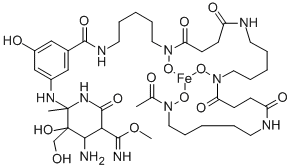
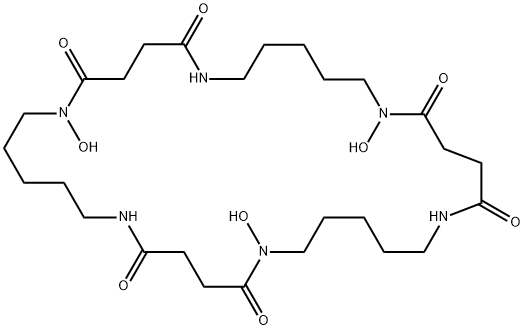

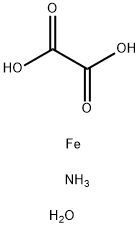

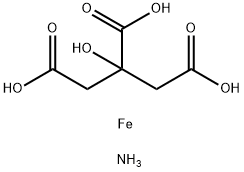
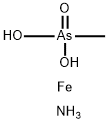
You may like
-
 138-14-7 Deferoxamine mesylate USP/Ph. Eur 99%View Details
138-14-7 Deferoxamine mesylate USP/Ph. Eur 99%View Details
138-14-7 -
 Desferrioxamine mesylate 98%View Details
Desferrioxamine mesylate 98%View Details
138-14-7 -
 Deferoxamine mesylate CAS 138-14-7View Details
Deferoxamine mesylate CAS 138-14-7View Details
138-14-7 -
 Deferoxamine mesylate salt powder, ≥92.5% (TLC) CAS 138-14-7View Details
Deferoxamine mesylate salt powder, ≥92.5% (TLC) CAS 138-14-7View Details
138-14-7 -
 Deferoxamine mesylate CAS 138-14-7View Details
Deferoxamine mesylate CAS 138-14-7View Details
138-14-7 -
 1975-50-4 98%View Details
1975-50-4 98%View Details
1975-50-4 -
 14714-50-2 (2-Hydroxyphenyl)acetonitrile 98+View Details
14714-50-2 (2-Hydroxyphenyl)acetonitrile 98+View Details
14714-50-2 -
 118753-70-1 98+View Details
118753-70-1 98+View Details
118753-70-1